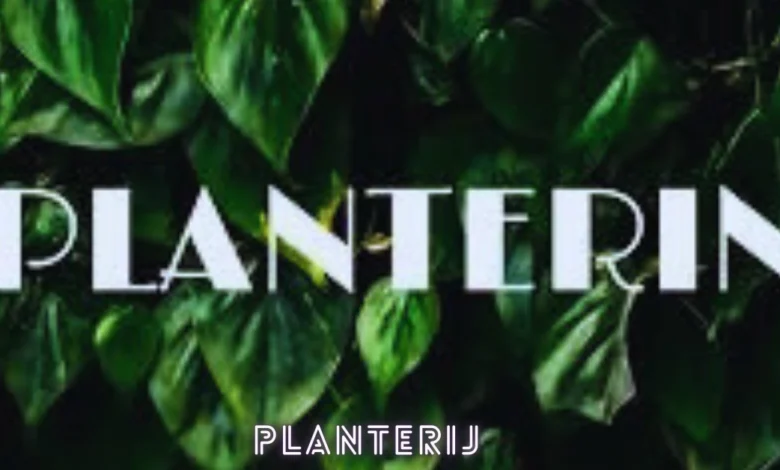The History and Evolution of Planterij Gardens

The term planterij has its roots in Dutch, denoting a plantation or a well-planned garden. This concept has evolved to encompass various forms of organized planting spaces that cater to both aesthetic and functional needs. A planterij is not just a garden; it represents a carefully curated space where different plants, flowers, and sometimes vegetables are strategically arranged to create a harmonious and productive environment.
Historical Evolution of Planterij
The history of the planterij is intertwined with the development of horticulture and agriculture. In early times, plantations were primarily used for growing food crops and medicinal plants. As societies evolved, the focus shifted to aesthetic and ornamental planting. Gardens and plantations became symbols of status and sophistication, reflecting the owner’s taste and interests. The modern concept of planterij embraces both historical traditions and contemporary innovations, making it a dynamic and evolving practice.
Types of Planterij
Ornamental Planterij
Ornamental planterij focuses on the aesthetic appeal of plants and flowers. It involves selecting and arranging species for visual impact, such as color schemes, textures, and seasonal interest. Ornamental gardens often feature a variety of flowers, shrubs, and trees that provide year-round beauty and interest.
Vegetable Planterij
A vegetable planterij is designed for growing edible plants. This type of planterij is organized to optimize space and productivity, often incorporating raised beds, container gardening, or vertical gardening techniques. It combines functionality with a touch of aesthetic arrangement, creating a practical yet pleasing environment for growing food.
Herb Planterij
Herb planterij is dedicated to cultivating herbs for culinary, medicinal, or aromatic purposes. This type of garden often includes a range of herbs such as basil, mint, rosemary, and lavender. Herbs can be grown in specialized beds or containers, making them accessible and easy to maintain.
Mixed Planterij
A mixed planterij combines elements of ornamental, vegetable, and herb gardens. This approach allows for a diverse range of plants within a single space, offering both beauty and functionality. It can include flower beds, vegetable patches, and herb sections, creating a balanced and versatile garden.
Planning and Designing a Planterij
Site Selection and Preparation
Choosing the right location for a planterij is crucial for its success. Factors such as sunlight, soil quality, and drainage need to be considered. A well-drained site with adequate sunlight is ideal for most plants. Soil preparation involves testing soil quality and amending it with compost or other organic materials to improve fertility.
Plant Selection
Selecting the appropriate plants for a planterij depends on the garden’s purpose and environmental conditions. For ornamental gardens, choosing plants with varying bloom times and colors can create a dynamic and visually appealing space. For vegetable and herb gardens, selecting varieties suited to the local climate and soil conditions ensures a productive harvest.
Layout and Design
The layout of a planterij involves arranging plants in a way that maximizes space and visual appeal. Techniques such as companion planting, which involves growing plants together that benefit each other, can enhance both aesthetics and productivity. Designing pathways, borders, and focal points adds structure and functionality to the garden.
Maintenance and Care
Watering and Irrigation
Proper watering is essential for the health of a planterij. Different plants have varying water needs, so it’s important to understand the requirements of each species. Implementing an efficient irrigation system, such as drip irrigation or soaker hoses, can help ensure consistent and adequate watering.
Fertilization and Soil Care
Regular fertilization helps provide essential nutrients to plants. Organic fertilizers, compost, and mulches can improve soil quality and promote healthy growth. Monitoring soil pH and adjusting it as needed ensures that plants receive the appropriate nutrients.
Pest and Disease Management
Managing pests and diseases is crucial for maintaining a healthy planterij. Integrated pest management (IPM) strategies, which include biological controls, physical barriers, and organic treatments, can help minimize damage while preserving the ecosystem.
Benefits of a Planterij
Aesthetic Appeal
One of the primary benefits of a planterij is its aesthetic value. A well-designed garden can transform an ordinary space into a visually stunning environment. The beauty of a It can enhance the overall ambiance of a home or public area, providing a serene and pleasant atmosphere.
Environmental Impact
Planterij contributes positively to the environment by promoting biodiversity and improving air quality. Plants in a planterij absorb carbon dioxide, release oxygen, and provide habitat for various wildlife. Additionally, incorporating native plants supports local ecosystems and encourages ecological balance.
Mental and Physical Health
Gardening has been shown to have numerous mental and physical health benefits. Engaging with nature, tending to plants, and spending time outdoors can reduce stress, improve mood, and increase physical activity. It offers an opportunity for relaxation and personal well-being.
Sustainable Practices in Planterij
Organic Gardening
Organic gardening practices involve avoiding synthetic chemicals and using natural methods to manage pests and enhance soil fertility. Organic fertilizers, compost, and natural pest control methods contribute to a healthier and more sustainable It .
Water Conservation
Implementing water conservation techniques, such as rainwater harvesting and efficient irrigation systems, helps reduce water usage and minimize waste. Mulching and proper plant selection can also reduce the need for frequent watering.
Native Plants and Biodiversity
Incorporating native plants into a It supports local wildlife and promotes biodiversity. Native plants are adapted to the local climate and soil conditions, requiring less maintenance and providing essential resources for native pollinators and other organisms.
Trends and Innovations in Planterij
Vertical Gardens
Vertical gardening, or green walls, is an innovative approach to maximizing space in urban environments. By growing plants on vertical surfaces, such as walls or trellises, vertical gardens can transform small spaces into lush, green areas.
Smart Gardening Technologies
Advancements in technology have led to the development of smart gardening tools and systems. Automated irrigation, soil sensors, and app-controlled garden management systems can help optimize plant care and streamline maintenance tasks.
Urban Planterij
Urban planterij focuses on creating green spaces in city environments. Rooftop gardens, community gardens, and balcony planters are examples of how urban areas can integrate gardening into densely populated areas, improving both aesthetics and quality of life.
Conclusion
It represents a harmonious blend of functionality and beauty, offering a diverse range of benefits from aesthetic appeal to environmental impact. Whether focused on ornamental, vegetable, herb, or mixed gardening, a well-planned It enhances our living spaces and contributes positively to our well-being and the environment. Embracing sustainable practices and staying informed about trends and innovations can further enrich the planterij experience, making it a valuable and rewarding endeavor.
Read More: Liam Flockhart: Facts About Calista Flockhart’s Son




